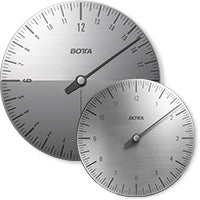Imagine looking back on your day at its end: What did you spend your time on? And how much of it was truly your time?
In the previous impulses, we explored the conscious perception and visualization of time. Today, we take it one step further and invite you not only to record your time, but also to evaluate it – as a foundation for intentional change.
The Difference Between Bound and Free Time
Not every hour of the day is truly ours to control. A large portion is tied to external obligations such as work, family duties, or commuting – this is what we call bound time. In contrast, free time refers to the hours we can shape according to our own wishes: reading, exercising, meeting friends, or simply relaxing. Making this distinction creates transparency – and is the first step toward greater self-determination in everyday life.
Using the Time Chart from Impulse 3 as an Analytical Tool
Use the time chart you created in the previous impulse to analyze your day. In this chart, you can color-code activities according to main categories – for example:
-
“Leisure = green” (media use, board games, meeting friends)
-
“Sports = red” (hiking, jogging, walking)
-
“Work = blue.”
Next, mark which time blocks are bound and which are freely disposable. For better clarity, you can highlight these areas separately.
We provide you again with a visual guide and example for this impulse to illustrate how such a classification might look. It quickly becomes apparent that weekdays, weekends, and vacation days differ significantly in structure. Above all, the chart vividly shows how your time blocks are distributed – and where there’s potential for change or improvement. Such visual evaluation brings clarity and provides a strong basis for making conscious adjustments.
Evaluation and Reflection: The First Step Toward a Higher Quality of Life
Look at your time chart and ask yourself:
-
How much of your time is truly free?
-
How would you ideally like to use it?
-
Does your current time allocation reflect your values and goals?
This is where BOTTA’s philosophy comes into play: gaining clarity about your personal time budget is key to inner sovereignty. Only by recognizing how you invest your time can you make deliberate choices for change. Setting boundaries – for example, against constant availability or excessive commitments – opens up space for what truly matters.
Your Practical Impulse
Compare your time charts for different days: What patterns do you notice? Are there time-wasters or opportunities for more free time? Make your time visible and evaluate it honestly – this is how you lay the foundation for a self-determined, fulfilling approach to time.
Because time is your most valuable asset. How you structure and use it ultimately determines your quality of life.











1 comment
Das Evaluate Time Diagramm ist klasse.
Ich freue mich auf den Besuch ,
der WachTime .
Wir sehen uns;-)